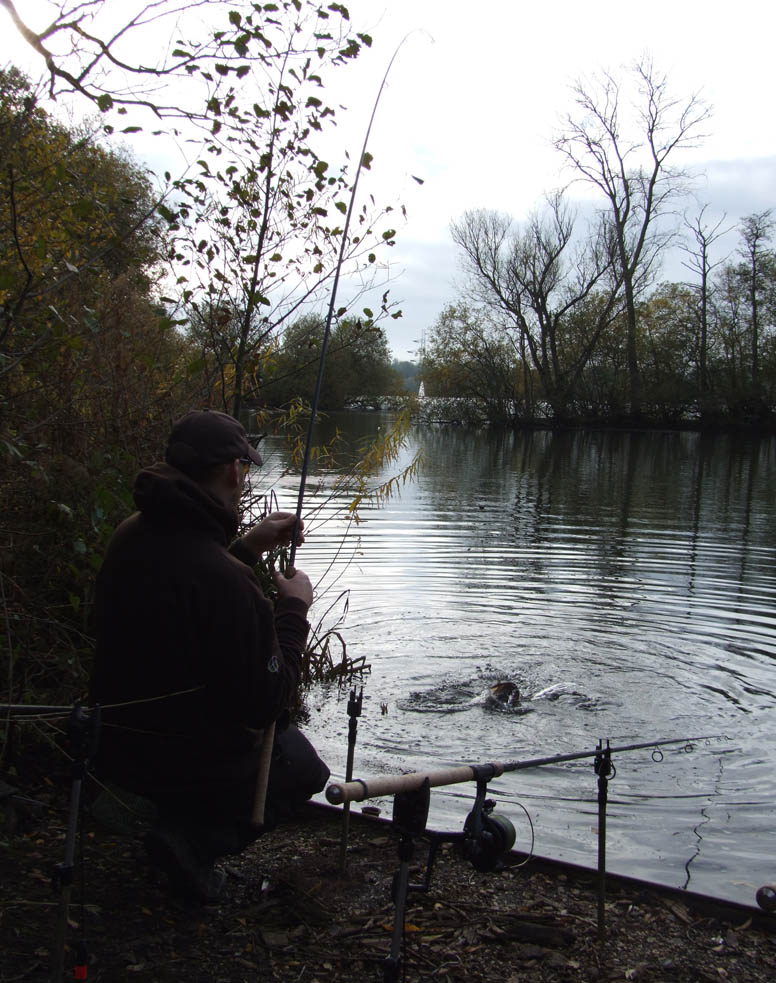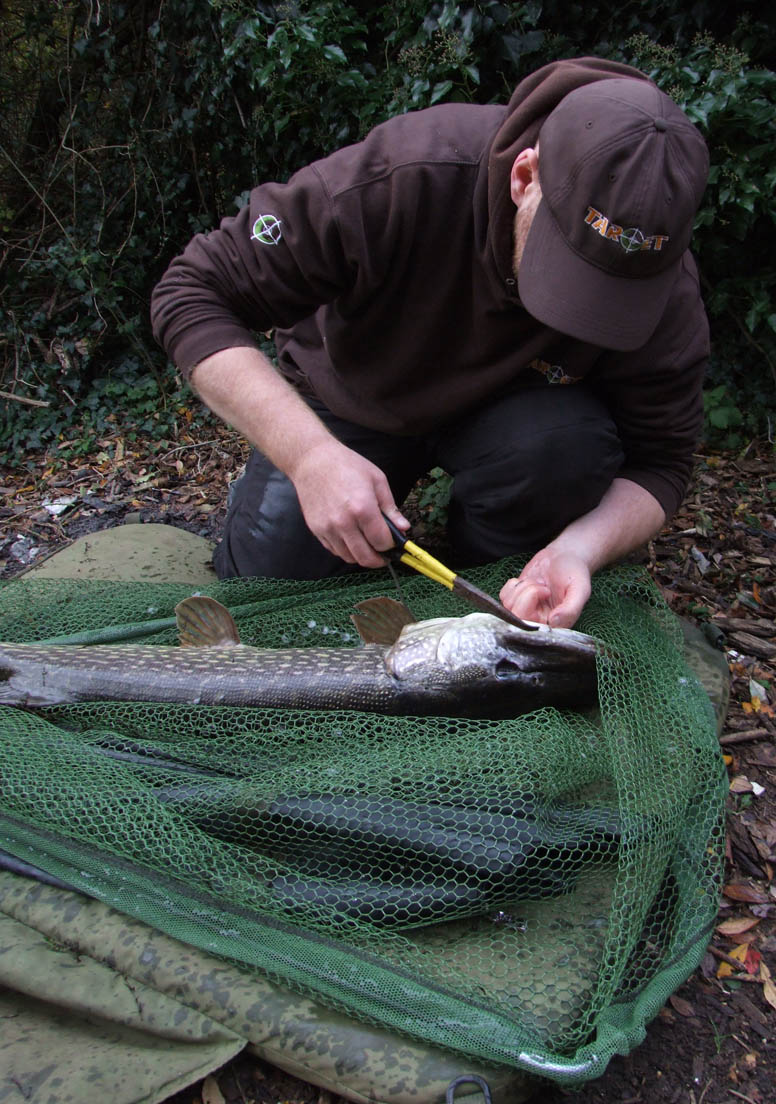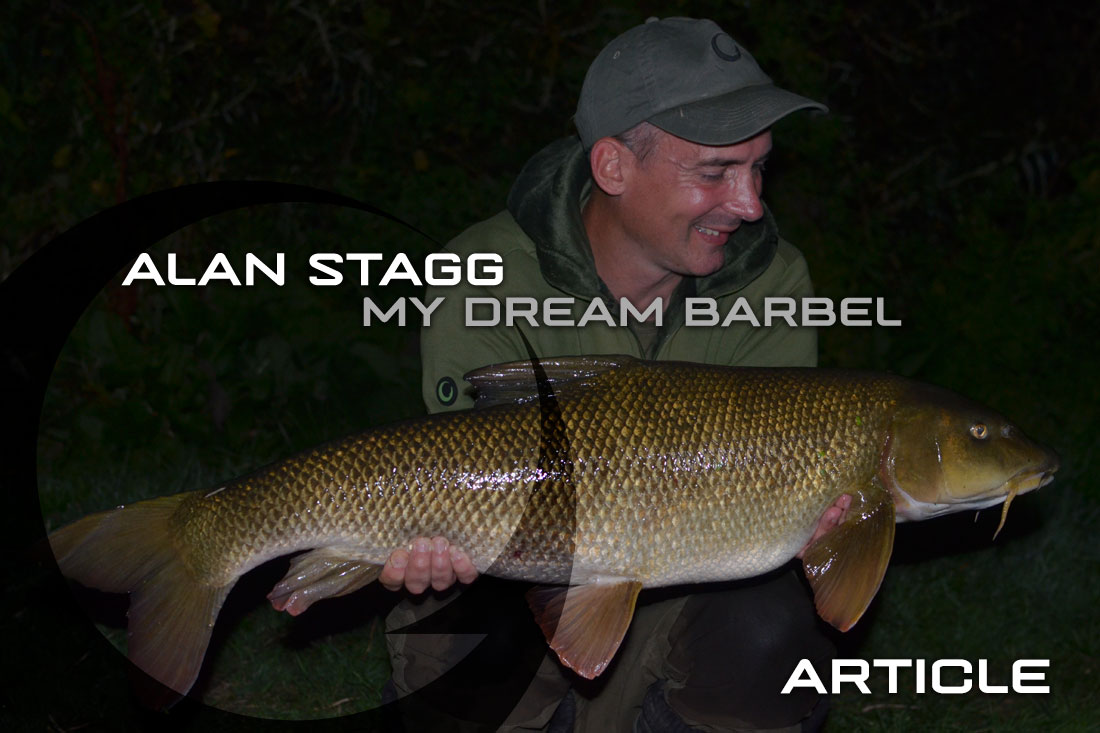Well, this article was originally planned to be one telling you all of our amazing exploits of non-stop hauling of twenties and thirties from pike mecca Chew, but alas after spending a few days there in November (not to mention quite a few quid in the process), we came away with just three fish landed. Alan managed two double figure pike and a foul hooked trout, and I didn’t have a single fish. I know a lot of people consider Chew as being ‘an easy runs water’ where you just turn up and chuck out a bait, then winch back a lump, but in reality this couldn’t be further from the truth. Yes, you do get the occasional day where they all go on a mad feeding spree, and due to the fact there are some very big fish in there, it gets a lot of publicity, but for most of the time they are no easier to tempt than pike on other venues, and a lot of the time even harder. They are probably the most pressured pike in the country, when you consider that on most days there are over twenty boats afloat, each with two anglers and most of them fishing two rods each, then probably another twenty or more anglers on the bank, again each using two rods, you end up with well over one hundred rods out on any one day, now consider that on some days there are only a handful of fish landed, you soon realise that it isn’t the shooting fish in a barrel venue it’s made out to be.

Anyway, enough of my making excuses for blanking at Chew, onto the article itself. Alan and I needed to redress this lack of fish and knew just the venue to head for. We are both members of the syndicate water in question, a large gravel pit in the South of England that has done pike to 37lb in the past and still holds a reasonable head of good pike up into the low thirties with plenty of back up doubles. Perfect for getting regular takes and building your confidence back up. Although the current conditions were rather unfavourable with constant very high air pressures and clear blue skies, we were still confident of some fish for the camera. Alan arrived before me and got his rods out onto a very productive spot he had discovered in his swim a few weeks back, only a small gravel hump in an area that is mainly islands, but it just shows how important these little spots can be not just for tench and carp etc. but pike as well, as baits only a few feet off this spot were constantly ignored. Whilst baiting up and fishing little spots like this when fishing for other species is normally a piece of cake by clipping up and just casting at them, it can be almost impossible to do so when using large soft deadbaits like herrings and sardines without them flying off the hooks and landing anywhere apart from where you want them, and this is where the dreaded bait boat really comes into its own. I know a lot of people frown upon their use, saying they take away the skill of fishing by using electronic wizardry etc, but in my view they are no different to using bite alarms instead of watching a float constantly, just an electronic aid to make our fishing more effective. But enough of the rights and wrongs of bait boats, that’s a whole different kettle of fish for another article. By boating out his baited rigs, combined with a handful of chopped fish to his spots, Alan has been catching regularly off his spot including a cracking low twenty the other week.
I duly arrived and dropped into the swim next to him, partly because I know this swim has produced good pike in the past, and partly for convenience not only for taking pics etc for this article, but also as they literally are about five yards apart, we can sit in the middle and discuss all things fishy whilst consuming a steady supply of sausage and bacon sarnies. Even though the swims are right next to each other, they face out into totally different sections of water, each area being separated by a row of islands.
My rods were all spooled up still from Chew with my normal 30lb Gardner Kinetic braided mainline, the zero stretch qualities of braid make setting the hooks so much easier than mono, leaving you in total instant control of the fish. Onto this I attach a running 2oz lead via a Gardner Drop Out Chod Safety Clip and run ring. Although originally designed for attaching a lead on a chod rig for carp fishing, I now use these little plastic clips to attach all my leads, as I know that if a lead does get snagged on something, the rig will dump the lead safely and not endanger the fish. I then clip on a wire trace, and I’m ready. I always tie my traces at home as you can make them far neater and easier sat in the warmth, rather than faffing about with cold shivery hands on the bank, then carry a load with me ready to go in a Gardner Rig Bin.

For my first rod, I donned the chest waders and walked the bait out along the margin of one of the islands on my left, as when I had arrived I had seen a couple of pike swirling at bait fish along there. With a nice juicy sardine carefully placed in about two feet of water on a clear gravel spot, I set about getting the other rods out. The middle one went out about forty yards out into a clearing in the weed with a herring popped up the length of the trace wafting enticingly for any passing pike, and my last rod was flicked along the right hand margins in about six feet of water where again there had been a couple of pike chasing bait fish. In fact, all around this peninsula there had been pike chasing small roach constantly for days, so we felt in with a good shout of a fish or two for the cameras.
Before long I received a slow twitchy take on my left hand rod from the shallow water off the island margin, a quick strike was met by the tell-tale head shaking of a pike on the other end. A quick spirited fight saw a fish of about 10lb safely landed and once on the mat the hooks popped out easily and she was held up for the cameras for a few snaps. Although not a huge fish, she was more than welcome on a chilly day. Once she was released and the rod placed back on the spot, we sat back and got the frying pan out for a celebratory sausage and onion sarnie for breakfast. We had only just finished eating this, when Alan’s rod rattled off as something decided it wanted to eat his sardine for its own breakfast. This one was another low double, probably a couple of pounds more than mine and as before, after a few quick photos she was slipped back none the worse for wear.

It all went quite then for a while, despite the pike constantly attacking the roach fry all around us. They seemed pretty preoccupied with feeding on them, as both of our fish were coughing up loads of tiny roach as we were unhooking them. I spent a while running a tiny one inch spinner through my swim, even literally a foot or so away from fish I could see feeding, but they didn’t seem interested. Despite this, as we had still had fish on deadbaits in the middle of this, I was surprised not to have had any action on my right hand rod as there had been pike swirling and smashing into the roach directly above my bait for a few hours, without even a single bleep. I decided to try something different on that rod and on winding it in, even though I had felt the lead ‘donk’ down, the whole lot came in engulfed in a ball of weed, hence no doubt why the pike hadn’t found it. I had a rummage through all my deadbaits and found the smallest sardine I could, hardly bigger than a sprat, and rigged it up with a length of Gardner Pop Up Foam down its throat to pop it up off the bottom, this was then swung out a bit closer to the bank in shallower water, in fact shallow enough that I could see the bait popped up less than a foot below the surface.

This only lasted about fifteen minutes before one of the fry hunters returned and obviously couldn’t resist the tasty morsel. Considering how hard they had been smashing into the fry shoals, the take was very tentative, the only indication being the rod tip gently knocking and a couple of bleeps on the alarm. I always use front AND back alarms for this very reason, when they are feeding confidently they will pull the line from the clip on a back biter and you can’t miss them, but I have had many pike over the years that the only indication has been a single bleep and a slight knocking on the rod top, especially in colder weather when they aren’t really moving much. Anyway, back to the take in question. As there was obviously something playing with the bait, I struck firmly and what felt a bigger fish bolted off in the other direction. This felt a much more powerful fish and gave me a really good scrap, having to backwind a few times before it was finally drawn over the waiting net. With her waiting in the net in the water, the scales and sling etc were prepared. The head looked like that of a good fish in the net, but once I lifted her out she looked a bit on the thin side and smaller than expected considering the fight. I was still more than happy though to catch her as she was immaculately marked, and at spot on the nose of 15lb was a nice fish to catch. She did get her revenge on me as I was lifting her up for a vertical photo by catching me with her gill rakers, leaving me with a nicely bleeding finger, but you can’t be a real pike fisherman without picking up a few war wounds along the way.

This leads me nicely onto the subject of tools for dealing with pike. It’s scary how under equipped some anglers are for dealing with pike and their unhooking, I know a lot of people use forceps, but generally unless the fish is very lightly hooked on the outside of the mouth, these just aren’t up to the job. A decent pair of long nose pliers are a must to be able to get a good firm hold on the hooks, I carry a pair of twelve inch straight nose and a pair of twelve inch curved nose ones. A decent set of heavy duty wire cutters is also a must, all of these can be bought for around a tenner each so there is really no excuse. I have had to cut flying trebles out of nets a few times and I know of a couple of anglers who have had flying trebles embed themselves into their hands as they are unhooking a lively pike that is attached to the other treble. Without a decent selection of suitable tools to hand, these could have ended up very badly, but a quick snip and they were separated instantly. A last and often ignored bit of equipment for unhooking is the John Roberts Deep Throat Disgorger. I never go piking without one it’s one, and think of them in the same way as I think of the air bags on a car, of those items that thankfully very rarely gets used, but those rare occasions when you do need them, they are invaluable. It’s really not worth the risk going piking without any of these, not only for the well-being of the pike, but on occasions your own safety.










Leave A Comment
You must be logged in to post a comment.